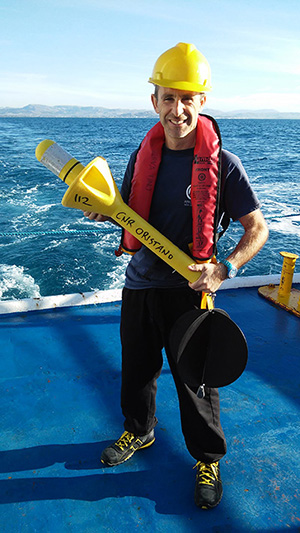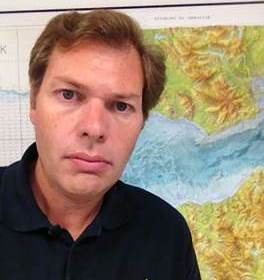POLLUTION IN THE MEDITERRANEAN
Nomad drifters have been key to investigate surface marine currents both at offshore and very coastal zones. Nomad drifters have also been used to validate ocean numerical models at different spatial scales.

"At CNR in Oristano (www.seaforecast.cnr.it) we have used both Offshore and Coastal Nomad drifters in areas of the Central and Western Mediterranean Sea. These are areas under potential risks of pollution due to heavy metals or oil in the marine environment. SouthTEK drifters have shown to be low cost, easy-to-use and reliable instruments in both open waters and inside harbors. Their high data quality has permitted us to validate easily coastal and open ocean numerical models, each of them with different needs."
SEARCH AND RESCUE
The highly dynamics and demanding waters at the Strait of Gibraltar have been the regular test bed for Nomad Drifters to focus the exploration area in Search & Rescue (SAR) operations and oil spills mitigation.

"Salvamento Marítimo (www.salvamentomaritimo.es) provides the public service of Search and Rescue in Spain under the Ministry of Fomento. It is critical to us to get knowledge of the currents at sea so that we can address our maritime and aerials units to the position where a shipwrecked person is expected to be. We used both Coastal and Offshore Nomad buoys, and its contrast with simulated processes, to this aim, and they were very useful and are easy to configure and operate. They are also robust and the battery can be recharged once picked up, so we have been using them over and over again over several years now."
CURRENT DIAGNOSE
The Lagrangian trajectories of the Nomad buoys will help you to assess marine currents at different scales and will enable robust algorithms to compute advection processess.

"Nomads drifters are the perfect complement to validate our models for the complex circulation of the Strait of Gibraltar. Currents and counter-currents predicted by our theoretical and numerical analyses were later confirmed thanks to the precision provided by these buoys; good value for money, no doubt!"
PLANKTON
Plankton distribution critically depends on physical processes at different scales. Nomad buoys perform exceptionally well in these experiments that can help you to understand their fluctuations with origin in the physical forcing.

"I operated Noman buoys from SouthTEK while at the project MEGAN (www.facebook.com/ MeganOceanography) to follow the Lagrangian path of plankton patches. Their precision and easy operation allowed us to track these mesoscale patches with our oceanographic vessel. The experiment with more than 30 drifters was a full success and one to repeat in future cruises with these reliable and technologically advanced buoys."
JELLYFISH
Coastal Nomads are particularly efficient as an early warning system for jellyfish beaching. Coastal surveillance boats, fishermen or volunteers can mark a swarm in the sea to follow its path and eventually foreseen its arrival at a particular beach.

"I am doing my Ph D on the ecology of jellyfishes in the western Mediterranean. I came across with the buoys from SouthTEK and though they can help me to understand how coastal currents transport these animals across beaches. Being a biologist by formation, it was surprising for me how quickly I obtained information about physical processes like currents and advection, and they are very easy to operate. As they say, to switch them on is all you need to start getting valuable information; thanks SouthTEK team for this great job!"

